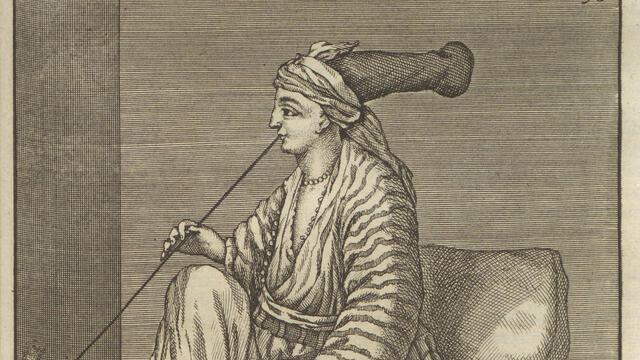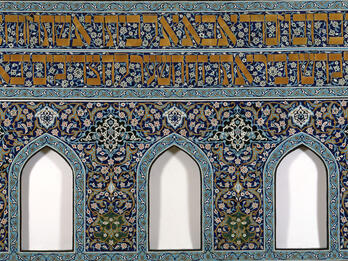Early Modern Literature and the Arts
Jewish literary creativity flourished in the early modern period, dominated by Hebrew poetry that blended religious themes with Renaissance forms.

Jewish literary creativity flourished during the years 1500 to 1750 in many geographical centers and was expressed in a variety of languages. In this section, the reader will find Italian poetry, a Judeo-Italian elegy, Yiddish and Ladino songs, mixed Arabic-Hebrew poems, and epic verse narratives written in Yiddish and Judeo-Persian, but most of the poetry and belles lettres composed during the period were in Hebrew, as had been the case for centuries. This section also includes a few theoretical treatises related to literature and the arts, on Hebrew prosody and biblical song, as well as one on theater.
Poetry
Hebrew poetry blossomed in the Ottoman Empire, North Africa, and especially in Italy and Holland. The language had always served as the chief vehicle of religious poetry for Jews, from poems written to be included in the liturgical service to those composed for religious festivities outside the synagogue (see also Liturgy and Ritual). Devotional and meditational poems of a religious nature were also composed by diverse figures.
Among those who wrote religious poetry, many were kabbalists who infused their poetry with kabbalistic ideas, more or less explicitly. Israel Najara stands out. He was born in Damascus and was active mainly in the land of Israel. His poetry contains a rare combination of religious piety, kabbalistic ideas, and secular influences. He is rightly considered one of the greatest Hebrew paytanim (religious poets) of all times. During the seventeenth century, Shalem Shabazi, one of the most prominent rabbis of Yemen, wrote deeply spiritual, kabbalistic poetry that couched his subject—the love of God—in the erotic language of Arabic (and Hebrew) love poetry. His poems also incorporated many Arabic words, and some were written in macaronic Hebrew and Arabic. Simon Ibn Lavi, an exile from Spain who reached North Africa, settled in Libya and became the rabbi of Tripoli. His book Ketem paz (Patch of Gold) is a commentary on the Zohar. He too wrote religious poetry permeated with kabbalistic concepts, most famously “Bar Yoḥai,” in honor of the putative author of the Zohar, Simeon bar Yoḥai.
Religious poetry was composed by nonkabbalists as well, sometimes by cantors who would perform their own work. Amsterdam was an important center for poets, such as Joseph Shalom Gallego, cantor at one of the Sephardic congregations, who edited a volume of poetry, Imre no‘am (Pleasant Speech), printed in Amsterdam four years after his death in 1624. It contains hymns for the holidays and fast days, as well as epithalamia (poems celebrating marriage) and poems for circumcisions.
Solomon de Oliveyra (1635–1708) was brought up in Lisbon as a Christian and later, in Amsterdam, acquired impressive Jewish learning. He was a preacher and taught in the yeshiva of the Sephardic community, and after the death of Jacob Sasportas, he succeeded him as the rabbi of that community. At the time of the great Sabbatean awakening, which swept away masses of Jews, he dedicated a book of poems to Shabbetai Tzvi. De Oliveyra wrote a biblical pastoral novel in rhymed Hebrew prose entitled Ayelet ahavim (Hind of Love), as well as a number of poems in Hebrew, including sonnets.
During the Renaissance and Baroque periods, Hebrew poems were written on secular subjects as well. While traditional forms retained their appeal, as in the touching lament Judah Abravanel wrote for his son, change was coming. Love poems, odes to the pleasures of wine drinking, and philosophical musings on the inevitability of death were still composed, but their authors began to move away from the long-standing tropes of the medieval period, instead introducing themes drawn from Renaissance and Baroque literature and employing new poetic forms, such as the sonnet. The Frances brothers Jacob (1615–1667) and Immanuel (1618–ca. 1710), for example, were among the most gifted Hebrew poets in Italy and exemplify this literary trend.
Italy was the most important center of literary production in Hebrew during the Renaissance. Joseph Tsarfati (after 1470–1527), a physician who had mastered a number of languages, including Arabic and Latin, wrote a Hebrew translation of the famous Spanish play La Celestina by Fernando de Rojas. Only the opening poem of this translation is extant, and just a few of Tsarfati’s poems were published during his lifetime. Leone Modena, in addition to his many other activities, also wrote occasional Hebrew poems, including charming sonnets.
Italian Jewish poets also experimented with writing poetry in Italian. In the sixteenth century, Sarra Copia Sullam (1592–1641), for example, wrote a number of poems in Italian, as well as a manifesto in that language to refute an accusation against her that she had denied the eternity of the soul. Devorà Ascarelli translated several Hebrew literary works into Italian and had them published along with an Italian poem (in two parts) of her own. And Mordechai Dato composed a version of the story of Esther in Italian ottava rima. Poems in interspersed Hebrew and Italian were also written, including a lengthy one by Judah Sommo that defended the honor of women and praised real women of his acquaintance.
Yiddish epic poetry of the highest quality, which integrated the Jewish textual tradition with poetic forms drawn from German (and Italian) literature, flourished during the first half of the sixteenth century in northern Italy. Elye Bokher (Elijah ben Asher Levita, 1469–1549), active in Padua, Venice, and Rome, wrote two impressive epic poems while in Venice that were based on preexisting Italian works and borrowing the ottava rima form from Italian poetry as well. The first of these describes the adventures of a young nobleman, Bovo of Antona, and the story of his love for Druziane. It is based on an Anglo-Norman tale and was written in 1507, although it was not published until 1541. The book, 5,262 lines long, is entitled Bovo de Antona and is known as the Bove bukh (Book of Bovo). Only a part of the second epic, Pariz un Viene (Paris and Vienna) has been preserved. It was first printed in 1594, about fifty years after the author’s death.
The Kuh-bukh (Book of Cows) is a collection of rhymed fables in Yiddish, apparently printed for the first time in Verona in 1555, although only the second edition, from 1595, also printed in that city, survives. The book contains thirty-five moralistic fables.
The works of several poets in the western Sephardic diaspora who were chiefly active in Amsterdam stand out for their high literary quality and their connection with the Baroque style that prevailed in seventeenth-century Spain. Prominent among them were João Pinto Delgado (d. 1653), who grew up as a New Christian in Portugal and arrived in 1634 in Amsterdam, where he openly returned to Judaism; Antonio Enríquez Gómez (ca. 1600–1663), who lived in Spain and France for most of his life and never returned to Judaism; and Daniel Levi de Barrios (1635–1701), the greatest of the poets and playwrights of the Sephardic Amsterdam community.
Ladino coplas—strophic poems, often sung, on biblical stories or historical and life-cycle events—flourished during this period, but few of their authors are known today.
Theater and Music
Although it would be difficult to say that there was a true Jewish theater in this period, there were harbingers of theatrical activity in Hebrew and in Spanish. Moses Zacuto (ca. 1610–1697) wrote religious poetry and hymns, but his main literary contribution was two poetical dramas, among the first in Hebrew literature. The first of these was Yesod ‘olam (Foundation of the World), the earliest biblical drama in Hebrew, about the life of the patriarch Abraham, according to Midrash. The second was Tofteh ‘arukh (L’Inferno figurato) about the souls tormented after death, influenced by Dante’s Divine Comedy. The first Hebrew play known to us was written by Judah Sommo (1527–1592) of Mantua: Tsaḥut bediḥuta de-kidushin (An Eloquent Marriage Farce); Sommo also composed a treatise on stage production, in Italian, in the form of a dialogue and wrote many Italian plays, presumably for his troupe of Jewish actors, but nearly all of them were lost in the disastrous Turin fire of 1904. Perhaps the most famous of this period is the eighteenth-century drama by Moses Ḥayim Luzzatto, La-yesharim tehilah (Praise for the Upright).
Salamone de Rossi, in the late Italian Renaissance, was a prominent Jewish court musician, serving the Gonzagas of Mantua. Aside from composing numerous vocal works in Italian and Hebrew, as well as instrumental music, some of which is still performed today, he led an ensemble of (mainly) Jewish musicians.



![M10 622 Manuscript, probably from Ukraine]. Manuscript probably from Ukraine, c. 1740 with a broad collection of practical kabbalah and mystical magic. Facing page manuscript arranged vertically with Hebrew text in the shape of a figure wielding two long objects.](/system/files/styles/entry_card_sm_1x/private/images/vol05/Posen5_blackandwhite166_color.jpg?h=cec7b3c9&itok=Sz6u21MQ)